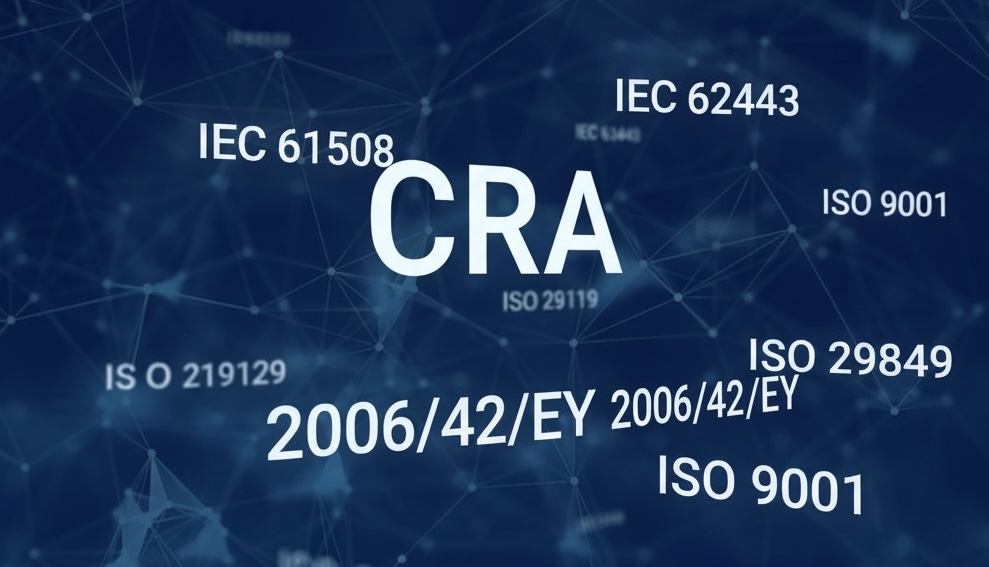In the digital world, trust is currency. To succeed, companies must prove that their services are not only innovative but also unshakably secure. But how do you ensure reliability when cyber threats and the regulations designed to combat them are constantly evolving? In this article, we dive into the core of compliance and reveal what you need to know about upcoming legislation.



For decades, digitalization has advanced at an accelerating pace. However, the increasing digitalization of society has also alarmingly amplified cyber risks. This trend has led to a clear need for stricter regulations for devices and software containing digital elements. Now is the moment for every organization to verify the reliability of its software and ensure that its product development has an adequate level of quality assurance.
Companies are now expected to demonstrate greater transparency, accountability, and reliability—not just to enhance the customer experience, but to comply with laws and directives. Investing in these areas is no longer a competitive advantage; it is a necessity for operation. Software must meet new regulatory requirements to be used safely as part of our networked society.
Compliance is not a single certificate you can acquire. Instead, it is a foundation built from multiple components that create a functional and, above all, secure basis for reliable software product development. You must be aware of the existing standards that apply to your product and its development, and in some cases, third-party verification may be necessary. Systematic testing must be an integral part of product development. Crucially, information security must be considered from the drawing board onward, at every single stage.
While there are several key frameworks related to software reliability, the EU's Cyber Resilience Act (CRA) is set to be a game-changer. It doesn’t just apply to hardware manufacturers but to everyone who produces digital products that connect to the internet—including software and technology providers. If the software is part of critical infrastructure or provides security services, the requirements are even stricter. The goal of the CRA is to ensure that products brought to market have cybersecurity requirements built-in and that their security is maintained throughout their entire lifecycle. The act also defines clear operational requirements for vulnerability management and reporting. Although the full obligations of the upcoming Cyber Resilience Act will not take effect until the end of 2027, it is wise to start preparing now.
Key Obligations of the Cyber Resilience Act:
Digital products cannot be created irresponsibly—they must be designed and built so that their cybersecurity aligns with real-world risks. Development must minimize attack surfaces, ensure data integrity and confidentiality, and the product must be delivered to the market without any known vulnerabilities. Default settings must always be secure. This ensures that only reliable software and networked solutions reach the market.
Digital products must be built to withstand real cyber-attacks. The technical architecture should be designed to minimize attack surfaces and store data confidentially. Security updates must be handled automatically.
Starting from September 11, 2026, product manufacturers must report actively exploited vulnerabilities within their products to the designated CSIRT unit and ENISA. When a vulnerability or a major security incident occurs, it cannot be kept silent. The notification procedures follow the same principles as the NIS2 Directive. An initial notification must be made within 24 hours of discovering the vulnerability, followed by a more detailed report within 72 hours. This ensures that essential functions are protected and users can trust that unauthorized access is reliably prevented. Incidents and near-misses affecting product security can also be reported.
The manufacturer must ensure the product's conformity before placing it on the market. Before the product is released, all required paperwork, such as technical documentation and user manuals, must be in order. Furthermore, the manufacturer must demonstrate that the product meets its specified requirements. In some situations, conformity may require an assessment by a notified body or a cybersecurity certificate. Only then can you say the software is ready to rock.
In practice, achieving CRA compliance means a company must evaluate its entire software lifecycle and related processes against the legislative requirements. Roughly, the steps would be as follows:
One of the most recognized methods for ensuring software security and reliability is the Security Development Lifecycle (SDL) model. The SDL method seamlessly integrates security into every phase of software development, from design to production and maintenance. Since development environments are often complex, the implementation of the model should consider the unique needs of each environment.
While there are several implementations of SDL, they typically share five core phases: Governance (requirements and management), Design (architecture and threat modeling), Implementation (coding & secure development tools), Verification (code and system testing), and Operations (incident management & environments).
Adopting an SDL model in software development is a key step toward ensuring compliance. Reliable digital development ensures that software is dependable, high-quality, secure, resilient, and trustworthy. Utilizing an SDL model also enhances transparency and preparedness for crisis situations. Reliability is always about planned predictability and a 99.999% attitude.
An internationally recognized way to assess and improve software security is the OWASP Application Security Verification Standard (ASVS). ASVS is an open standard designed to provide clear requirements for technical security controls for both developers and testing/verification teams.
With ASVS, you can:
ASVS offers different verification levels that can be chosen based on how critical the application is, the acceptable level of risk, and the potential impact of a security breach. This flexible structure makes ASVS highly suitable for companies looking to strengthen their compliance posture incrementally.
Wirokit was founded on the idea that reliable software is the foundation of all digitalization. As regulations tighten, your company needs a partner who can translate requirements into practical action. We help ensure that your quality assurance and software development processes meet the increasingly strict regulatory landscape. Our role is to make the complex simple and to enhance our clients' critical capabilities. We are committed to promoting software reliability and doing our part to build a more trustworthy digital society.


